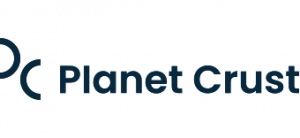Enterprise Systems Most Suited to Agentic AI
Introduction
Based on comprehensive research into current market implementations and future potential, several categories of enterprise systems emerge as particularly well-suited for agentic AI integration. These systems share common characteristics that make them ideal platforms for autonomous AI agents to operate effectively and deliver transformative business value.
Customer Resource Management (CRM) and Customer Service Systems
Salesforce leads the enterprise market with its comprehensive Agentforce platform, featuring Einstein Service Agent and multiple sales agents that operate autonomously across customer interactions. The platform’s native AI integration allows agents to handle complex customer service inquiries, sales qualification, and resolution processes without human intervention. These agents leverage Salesforce’s extensive CRM data to provide contextually aware responses and can seamlessly escalate to human agents when necessary. Microsoft Dynamics 365 has emerged as another strong contender through its agentic AI integration across sales, service, finance, and operations modules. The platform supports autonomous agents that can qualify leads, manage supplier communications, reconcile financial records, and handle case management operations. Microsoft’s approach leverages the Model Context Protocol to enable agents to share context across the entire business ecosystem, creating truly interconnected autonomous workflows.
IT Service Management/Operations
ServiceNow represents perhaps the most advanced implementation of agentic AI in enterprise operations through its AI Agent Studio and comprehensive multi-agent orchestration platform. The platform enables autonomous agents to handle IT incidents, change management, security operations, and network troubleshooting. ServiceNow’s agents can automatically detect issues, generate implementation plans, and resolve problems before they impact business operations. The platform’s Workflow Data Fabric allows AI agents to operate across different systems and data sources, making it exceptionally suited for complex enterprise environments. ServiceNow’s recent Zurich release demonstrates the platform’s commitment to agentic AI with rapid multi-agent development capabilities and improved governance features. The system supports both individual agent deployment and coordinated multi-agent teams that can collaborate on complex business processes.
Enterprise Resource Planning Systems
SAP has positioned itself strongly in the agentic AI space with its Joule agents system, which leverages 50 years of business process expertise encoded in SAP’s Knowledge Graph. Joule agents can autonomously manage procurement, financial reconciliation, supply chain optimization, and human capital management processes. The platform’s multi-agent collaboration enables specialized agents to work together on complex workflows like dispute management, where collections, invoicing, and customer support agents coordinate their activities. Oracle has introduced role-based AI agents across its Fusion Cloud Applications Suite, providing autonomous capabilities for marketing, sales, service, and finance operations. Oracle’s agents benefit from access to data across the entire enterprise ecosystem, not just CRM systems, enabling more comprehensive decision-making and process optimization.
Financial and Human Capital Management
Workday has developed a unique approach with its Illuminate platform and Agent System of Record concept, treating AI agents as digital employees that require governance and management similar to human workers. Workday’s agents can handle expense processing, succession planning, recruiting, and various HR service operations. The platform’s focus on agent governance and compliance makes it particularly suitable for organizations with strict regulatory requirements.
Specialized Enterprise Applications
Oracle’s comprehensive AI agent ecosystem extends beyond traditional CRM to include agents for contract analysis, product recommendations, escalation prediction, and work order management. These specialized agents demonstrate how agentic AI can be tailored to specific business functions while maintaining integration with broader enterprise workflows.
Key Characteristics of Suitable Systems
Enterprise systems most suited to agentic AI share several critical characteristics. They must provide comprehensive data integration capabilities, allowing agents to access and reason about information from across the business ecosystem. Workflow orchestration features enable agents to coordinate complex multi-step processes and collaborate with other agents or human workers. Security and governance frameworks ensure that autonomous agents operate within appropriate boundaries and maintain compliance with enterprise policies. These systems also require contextual awareness capabilities, enabling agents to understand business processes, customer relationships, and operational constraints. Integration flexibility allows agents to connect with external systems and data sources, while scalability ensures that agent networks can grow with organizational needs. The most successful implementations demonstrate that agentic AI thrives in environments with rich process knowledge, comprehensive data access, and established workflow patterns. Organizations already invested in these platforms can leverage their existing data and process investments to deploy autonomous agents more effectively than those requiring significant infrastructure changes. The convergence of low-code platforms with agentic AI capabilities, as seen in emerging solutions like enhanced Corteza implementations, suggests that the future may include more democratized approaches to agent development. However, the current market leaders have established significant advantages through their deep process knowledge, comprehensive data management capabilities, and mature integration ecosystems that make them particularly well-suited for enterprise agentic AI deployment.
References:
- https://www.neuraflash.com/blog/what-is-salesforce-einstein-service-agent
- https://www.salesforce.com/news/stories/einstein-service-agent-announcement/
- https://www.salesforce.com/news/stories/einstein-sales-agents-announcement/
- https://www.salesforce.com/agentforce/ai-agents/autonomous-agents/
- https://www.direction.biz/blogs/what-is-agentic-ai-and-why-it-matters-for-dynamics-365-users-in-2025/
- https://dynatechconsultancy.com/blog/custom-ai-agents-in-dynamics-fo-with-copilot-studio
- https://erpsoftwareblog.com/2025/08/ai-agents-in-dynamics-365-the-next-wave-isnt-about-tools-its-about-leadership/
- https://www.inry.com/insights/building-the-agentic-enterprise-with-servicenow-ai-agent-studio
- https://www.artificialintelligence-news.com/news/servicenow-deploys-ai-agents-boost-enterprise-workflows/
- https://barndoor.ai/ai-tools/servicenow-ai-agents/
- https://www.servicenow.com/company/media/press-room/ai-platform-zurich-release.html
- https://research.aimultiple.com/sap-ai-agents/
- https://joshbersin.com/2025/10/sap-jumps-ahead-in-ai-agents-with-joule-hcm-features-and-more/
- https://www.sap.com/products/artificial-intelligence/ai-agents.html
- https://martech.org/oracle-debuts-ai-agents-for-cx-and-revenue-teams/
- https://www.cxtoday.com/conversational-ai/oracle-launches-role-based-ai-agents-to-help-boost-roi/
- https://research.aimultiple.com/oracle-ai-agents/
- https://joshbersin.com/2025/02/workday-makes-a-play-to-manage-your-ai-agents/
- https://www.linkedin.com/pulse/workday-illuminate-how-ai-agents-changing-way-enterprises-work-ydzqc
- https://www.workday.com/en-us/topics/ai/agentic-ai.html
- https://www.oracle.com/applications/fusion-ai/ai-agents/
- https://aireapps.com/articles/imagining-corteza-as-an-agentic-ai-low-code-platform/
- https://aireapps.com/aire-for-corteza/
- https://blog.anyreach.ai/enterprise-agentic-ai-integration-a-technical-implementation-guide/
- https://olive.app/blog/top-agentic-ai-platforms-in-2025-the-ultimate-guide-for-businesses/
- https://www.iopex.com/blog/agentic-ai-enterprise-operations
- https://www.forumvc.com/research/2024-the-rise-of-agentic-ai-in-the-enterprise
- https://www.gptbots.ai/blog/enterprise-ai-agent
- https://c3.ai/c3-agentic-ai-platform/
- https://eapj.org/artificial-intelligence-how-agentic-ai-is-reshaping-enterprise-architecture/
- https://www.vellum.ai/blog/top-13-ai-agent-builder-platforms-for-enterprises
- https://www.qlik.com/blog/from-static-to-adaptive-why-agentic-ai-is-the-future-of-enterprise-software
- https://www.capgemini.com/wp-content/uploads/2025/09/Agentic-AI-Powered-by-Integration.pdf
- https://www.marketermilk.com/blog/best-ai-agent-platforms
- https://www.kyndryl.com/fr/fr/about-us/news/2025/09/agentic-ai-fact-vs-fiction
- https://www.coherentsolutions.com/insights/agentic-ai-use-cases-for-enterprise-ops
- https://beam.ai/agentic-insights/the-top-5-ai-agent-platforms-in-2025-and-how-to-pick-the-right-one
- https://www.bain.com/insights/building-the-foundation-for-agentic-ai-technology-report-2025/
- https://www.mckinsey.com/capabilities/quantumblack/our-insights/seizing-the-agentic-ai-advantage
- https://www.ai21.com/knowledge/ai-agent-frameworks/
- https://www.capgemini.com/solutions/agentic-ai-for-enterprise-by-capgemini/
- https://aireapps.com/articles/enterprise-systems-supporting-agentic-ai/
- https://www.ampcome.com/post/ai-agents-platform-in-2025-examples
- https://qgate.co.uk/posts/how-microsofts-agentic-ai-agents-are-changing-business/
- https://musqueteer.nl/en/einstein-vs-agentforce/
- https://www.inry.com/insights/servicenow-ai-agent-fabric-orchestrating-the-agentic-enterprise
- https://www.microsoft.com/en-us/dynamics-365
- https://www.linkedin.com/pulse/ai-agent-orchestrator-servicenow-transforming-g%C3%B6ran-jhrrf
- https://www.microsoft.com/en-us/dynamics-365/solutions/service
- https://www.youtube.com/watch?v=FeoyynFAjoc
- https://www.servicenow.com/products/ai-agents.html
- https://www.microsoft.com/en-us/dynamics-365/blog/business-leader/2025/06/04/ai-first-crm-systems-learnings-from-organizations-making-the-switch/
- https://www.linkedin.com/posts/rene-de-daniel-b108a413_sapsapphire-ea-sap-activity-7331937039862366209-0xno
- https://www.youtube.com/watch?v=Tjj4Rk83iJY
- https://www.workday.com/en-us/perspectives/artificial-intelligence/2025/03/ai-agents-enterprise-how-will-they-change-way-we-work.html
- https://www.sap.com/resources/what-are-ai-agents
- https://www.oracle.com/fr/artificial-intelligence/generative-ai/agents/
- https://www.workday.com/en-us/artificial-intelligence/ai-agents.html
- https://www.klover.ai/sap-uses-ai-agents-10-ways-to-use-ai-in-depth-analysis-2025/
- https://www.oracle.com/artificial-intelligence/generative-ai/agents/
- https://newsroom.workday.com/2025-09-16-Workday-Expands-Agent-Partner-Network-With-New-Ventures-Partners-to-Deliver-Enterprise-Ready-AI-Agents
- https://datavapte.com/blog/joule-agents-how-sap-is-redefining-ai-for-enterprise-operations/
- https://www.planetcrust.com/corteza-low-code-v-appian/
- https://www.rapidinnovation.io/post/ai-agents-for-case-management
- https://www.rizkly.com/digital-sovereignty-in-the-ai-realm/
- https://zbrain.ai/ai-in-case-management/
- https://digoshen.com/digital-sovereignty-in-the-age-of-ai/
- https://github.com/cortezaproject/corteza
- https://www.ai21.com/knowledge/ai-agent-use-cases/
- https://arxiv.org/abs/2410.17481
- https://cortezaproject.org
- https://dialonce.ai/en/blog-ai/trends/use-case-ai-agent-customer-service.html
- https://www.sciencespo.fr/public/chaire-numerique/wp-content/uploads/2024/11/report-european-sovereignty-artificial-intelligence-competence-based-perspective.pdf
- https://www.linkedin.com/posts/cortezaproject_how-low-code-complements-ai-enterprise-systems-activity-7376199906916462592-WLaV
- https://workativ.com/ai-agent/blog/ai-agents-use-cases
- https://www.noemamag.com/reclaiming-europes-digital-sovereignty
- https://www.planetcrust.com/the-low-code-enterprise-system
- https://www.rolandberger.com/en/Insights/Publications/AI-sovereignty.html
- https://www.cognigy.com/ai-agents/examples-ai-agents
